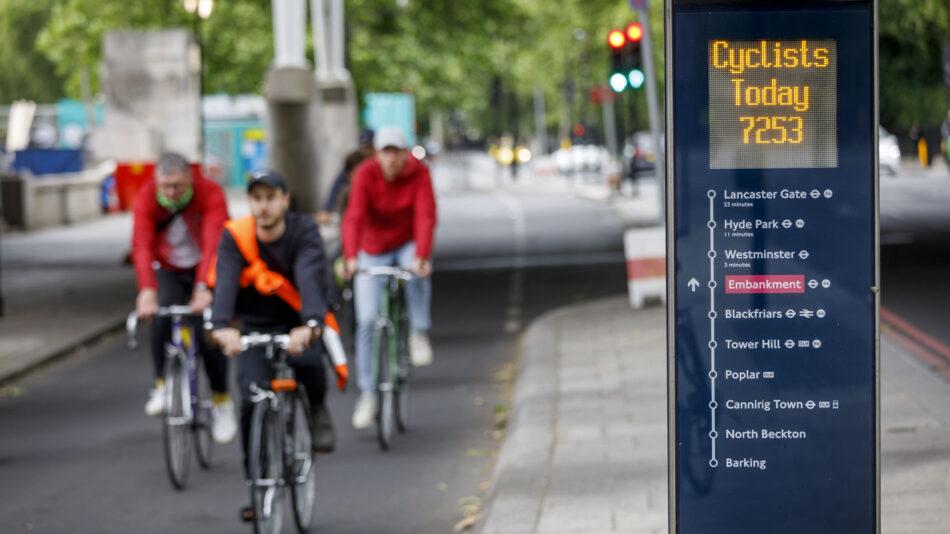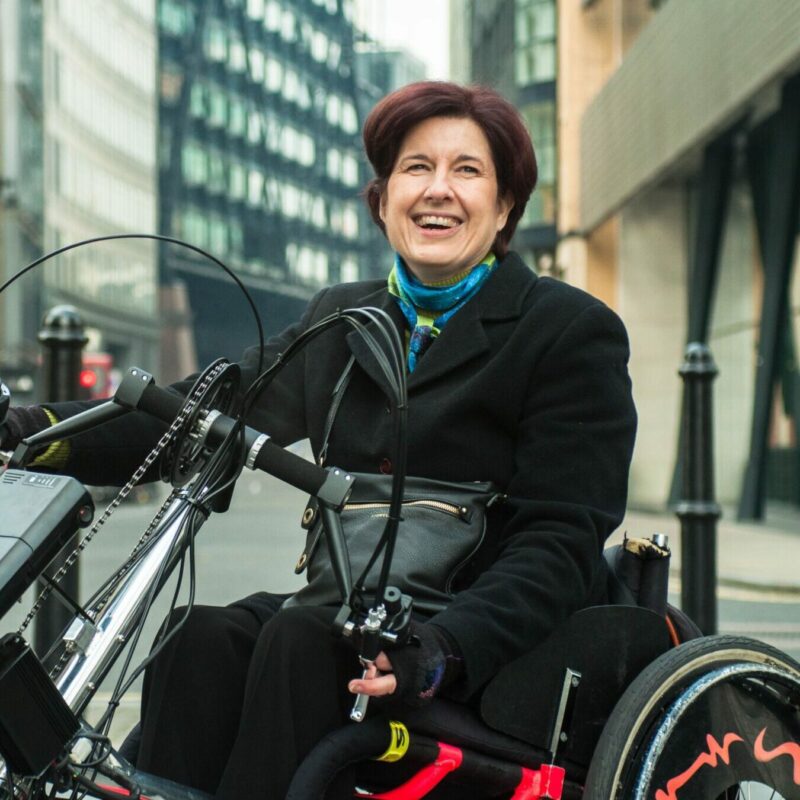

A network of physically-protected cycle tracks, on roads where there are lots of cars, or fast-moving cars, is the single most important thing we can do to get London cycling. Those of us who cycle today in London are a minority and we won’t get most people cycling without tracks that enable a far wider range of people to access shops and schools and amenities and to go directly from A to B.
It’s important to have a network of these routes that combine together. That’s the lesson from cities like Seville that have seen rapid growth in cycling. Most people will only cycle if they can come out of their front door, pootle through their quiet neighbourhood, turn onto the main road and cycle comfortably nearly all the way to their destination. People don’t want to have to wiggle or stop all the time. They also won’t cycle a route which gives up 4km before their destination.
Our Love London, Go Dutch campaign around the 2012 Mayoral election saw the first two major cycle track schemes delivered in London, despite fierce and organised opposition – the East-West Cycle SuperHighway along the Embankment in central London from Paddington to Wapping (now called C3), and the North-South Cycle SuperHighway from Kentish Town down to Elephant and Castle, now called C6.
Since then, our campaigning has delivered and continues to deliver cycle tracks across London – from Waltham Forest’s Lea Bridge Road, to Wandsworth’s A24, to Chiswick High Road in Hammersmith and far beyond.
What type of cycle tracks are there?
Main road cycle tracks can be separated from traffic using a variety of methods and in a bewildering variety of designs, complete with loads of jargon (“with flow”, “bidirectional”, “semi-segregated” etc.).
But the simple truth is you need some sort of regular barrier to stop cars just veering into cycle space, and enough space so if a kid on a bike wobbles, they don’t go into traffic.
Cycle track types explained in detail
Full kerb separated
A full, fairly continuous kerb (made of stone or rubber) put between cycle track and motor traffic. These generally give the highest feel of safety to users.
Semi-separated
Regularly spaced protective barriers used to separate people cycling on carriageway from motor traffic. This can be with rubber “wand” poles, bolt down rubber blocks (often “orcas” or “armadillos”), or with temporary schemes such as large red and white ‘Lego-style’ water-filled barrier blocks.
Stepped
This is where the cycle track is built at a higher level than the road, but next to it, with the pavement higher still (or, in some cases, with a very low triangle divider between pavement and track). Ideally, the kerb between track and pavement should be at a “forgiving” angle (circa 30 degrees), so that those cycling don’t skid if their wheel touches the kerb, and can even move onto the pavement if/when needed, but with enough height for visually-impaired cane users and others to understand the space.
With flow
Where cycle tracks are laid on both sides of a road, each with those cycling riding in the same direction as traffic flow on their side of the road.
Bi-directional
Where the cycle tracks are laid out with both directions travelling on the same side of the road. These use up less space, have less impact on the motor traffic capacity of the road, and work very well where those cycling are mostly riding in one direction at one time of day, the other at other times. But they do need to be carefully designed around side roads and big junctions to ensure those driving do not cause collisions with those cycling who are travelling against the flow of motor traffic.
Cycle Superhighway/Cycleways
The first protected cycle tracks in London were primarily delivered under previous Mayor Boris Johnson, who badged them (and previous blue-painted cycle lanes) “Cycle Superhighways”. Under Mayor Sadiq Khan, all higher-quality cycle routes, whether main road cycle tracks or on quiet side streets, are now badged “Cycleways”.
Bus stop bypass/boarder
These are design approaches for what to do for those cycling around bus stops. Simply expecting those cycling to ride through the bus “cage” (where buses stop), negotiating with buses, isn’t inclusive for most people.
Bypasses work by routing the cycle track around the rear of the bus stop/shelter – so pedestrians cross the track to reach an “island” to wait for the bus. Following intensive research, TfL uses speed humps with zebra markings and tactile paving to enable pedestrians to more easily cross the track.
Boarders are more controversial, but the data from TfL and European cities would indicate they also work well, despite some concerns. In this arrangement, the track continues between the road including the bus “cage”, and the bus stop where people wait. So when the bus arrives, people get on and off by crossing the track (usually with a small marked area between road and track).
What about bus lanes and bus gates?
Often in London, for now, bus lanes are the best cycling infrastructure you’ll find on a route. They’re wide, not generally encroached by most motor traffic (although many do allow taxis and motorbikes), and increasingly operate 24/7 with fewer parking bays. So often you’ll find bus lanes with nothing in them but loads of people cycling and the odd professionally-driven bus.
This means they’re one of the best ways to cycle around London today.
But would you let your child share a lane with loads of big buses? Most people wouldn’t. So while bus lanes can be useful for cycling in, they’re not going to help lots more people cycle.
Bus “gates” are points in roads where only buses and cycles (and sometimes residents, taxis, motorbikes and/or deliveries) can go through. These are most often enforced by an “ANPR” numberplate camera and fines. Where buses are infrequent, these can be a very good way of delivering a cycle route without tracks (for instance as part of a “low traffic neighbourhood”).
Why are schemes going in using temporary materials?
There are many reasons why sometimes temporary materials are used to deliver schemes. For trying stuff out to test it (and thus avoiding the need for expensive and time-consuming computer modelling); to keep costs low while budgets are tight; and where large developments or a major scheme means you need to adapt existing road layouts temporarily or at speed.
We work closely with TfL’s temporary works teams to ensure where schemes are temporary and where roadworks are ongoing, the best and safest designs are used for those cycling, as well as disabled people, pedestrians, everyone.
What about routes through parks and on quiet streets?
Area-wide “Low Traffic Neighbourhoods” can deliver great bits of the cycle network and knit in shorter journeys.
In contrast, many of the older “greenway” and “Quietway” schemes don’t work well. Old London ‘cycling routes’ might put you onto a dark towpath in winter, through an empty park or round the back of houses or an industrial estate, which can be very scary.
Also parks and some old routes aren’t usable by a wider range of cycle than the traditional bicycle. Anti-motorbike barriers at park entrances and on canals often don’t work for trikes or cargo bikes. And cobbles and gravel aren’t a good surface for cargo bikes, or the handcycles or recumbent cycles commonly used by people with disabilities.
PLANNING SAFE CYCLE ROUTES
Our team of experts give you the best advice on how to plot the best route for your journey - from the latest maps and ride-throughs to useful apps and tips
Keep Up To Date
